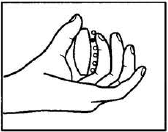There’s a fundamental rule that pretty much all bass players are acutely aware of, but many guitarists are not: fret as close as possible to the fret whenever you possibly can. If you don’t do this on guitar, you don’t pay for it most of the time, but if you don’t do it on bass and your action is the least bit on the low side, you’re more likely to get buzz. On guitar, this is primarily important for legato/tapping, but if you have .8 mm action, the situation is similar to bass
Fretting right next to the fret seems obvious, I know, but I played a very long time with my fingers not as close to the frets as possible. I see a lot of great YouTube players fretting dead center between frets even when not performing herculean stretches…
No one has mentioned that guitar specs also matter. It helps to have tall frets with legato/tapping because any pressure exerted upon the fingerboard itself is pressure not going into the string. More power is required for higher action or greater string tension, so you can offset the lack of serious fretwire by using lighter strings.
There’s a guy named Martin Goulding (Linear Sphere) who does a good job of filling the fretting hand instructional void. His picking technique is ridiculously clean and efficient, but when teaching he speaks a lot about the left hand. I recommend his advice and exercises here. He also has a lot of great YouTube videos–mostly etudes which make use of virtually every technique there is. For anyone who delights in the aesthetics of playing guitar, his hands are a joy to watch. He addresses things like finger angle, thumb position, transitioning the thumb depending on what strings one is playing on and if vibrato is required, as well as making use of redundant left-hand muting. Also a big fan of hammer-ons out of nowhere.
Here’s a legato lesson from him: https://www.youtube.com/watch?v=CMnKg2-Mjdk
He offers Skype lessons, and while I’ve never studied with him, I imagine a single hour would help even a lot of advanced players.


